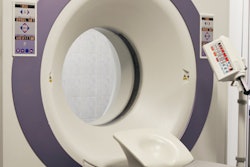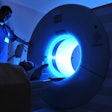
CT diagnostic reference levels (DRLs) are primarily intended to regulate radiation dose. But researchers from Duke University are now proposing that image noise be factored into DRLs to further optimize the quality of CT scans, in an article published in the October issue of the American Journal of Roentgenology.
The International Commission on Radiological Protection (ICRP) and the International Atomic Energy Agency (IAEA) have long supported the use of DRLs to guide CT scanning and limit unnecessary radiation exposure to patients. DRLs are generally set at the 75th percentile of radiation dose used at an institution.
However, most existing DRLs are based wholly on dose measurements and do not take into account image quality metrics such as noise, despite recommendations by the ICRP to do so, lead author Francesco Ria, PhD, told AuntMinnie.com.
"Dose-based optimization alone is not sufficient to embody the essence of diagnostics from diagnostic reference levels," he said. "Dose and image quality should be equally and simultaneously considered in CT performance evaluation and optimization in the context of patient populations."
To that end, Ria and colleagues proposed a new approach to CT performance optimization that evaluates radiation risk as well as image quality when establishing DRLs. They tested their approach by using performance monitoring software to measure several image quality and radiation dose metrics for CT scans performed at their institution (AJR, October 2019, Vol. 213:4, pp. 889-894).
In all, the researchers examined 2,793 chest CT and contrast-enhanced abdominopelvic CT exams acquired from September 2016 to February 2018 and categorized the data by patient size. Tracking a combination of noise and dose metrics allowed the group to calculate new, more comprehensive DRLs for chest and abdominopelvic CT at their institution.
| CT diagnostic reference levels from radiation dose and image noise | ||||
| Chest CT | Contrast-enhanced abdominopelvic CT | |||
| Patient size range (cm) | Dose reference level (mGy) | Noise reference level (HU) | Dose reference level (mGy) | Noise reference level (HU) |
| 21 - 24.9 | 4.7 | 11.5 | 5 | 10.1 |
| 25 - 28.9 | 5.1 | 12.8 | 6.5 | 11.6 |
| 29 - 32.9 | 7.1 | 12.9 | 9.2 | 11.6 |
| 33 - 36.9 | 11 | 12.1 | 12.1 | 11.3 |
| 37 - 40.9 | 14.6 | 12.3 | 16.7 | 12.1 |
The researchers also found that, whereas CT radiation dose increased based on patient size, the noise levels stayed relatively steady, regardless of patient size. In addition, they noted that the extent to which dose and noise increased or decreased was slightly different according to the brand of CT scanner used.
"Because different vendors pursue different automated tube current modulation strategies, patient-specific consistency can be targeted only by making the patient the focus of the procedure," Ria said.
In theory, considering both dose and image quality offers several advantages over dose alone, including helping clinicians more quickly identify CT scans with poor image quality or excessive radiation dose, as well as providing more quantitative data for optimizing CT protocols, the authors noted.
"When dose and image quality reference levels are established for clinical CT examinations, scanner performance and protocol optimization can be evaluated and improved in a context of patient populations," Ria concluded.



















